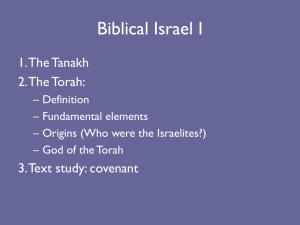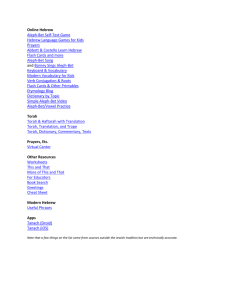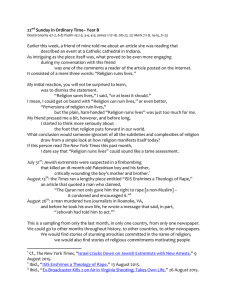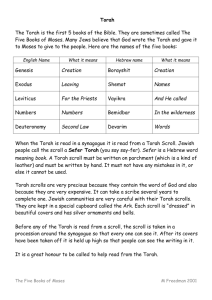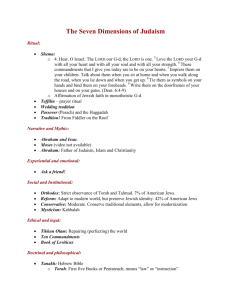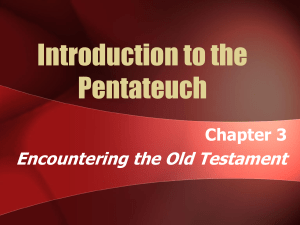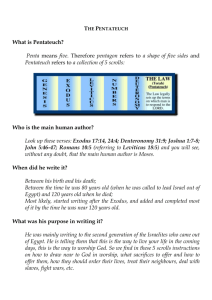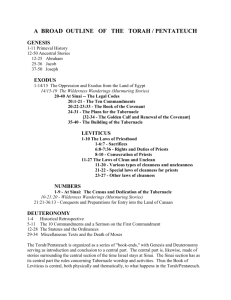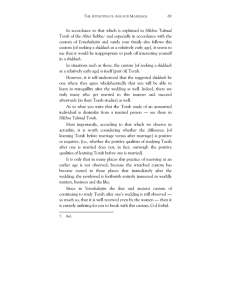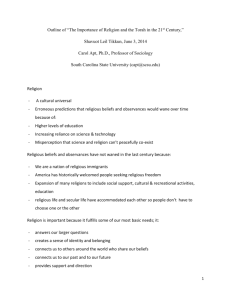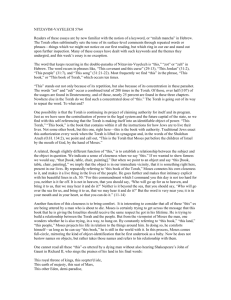חמשה חמשי תורה
advertisement
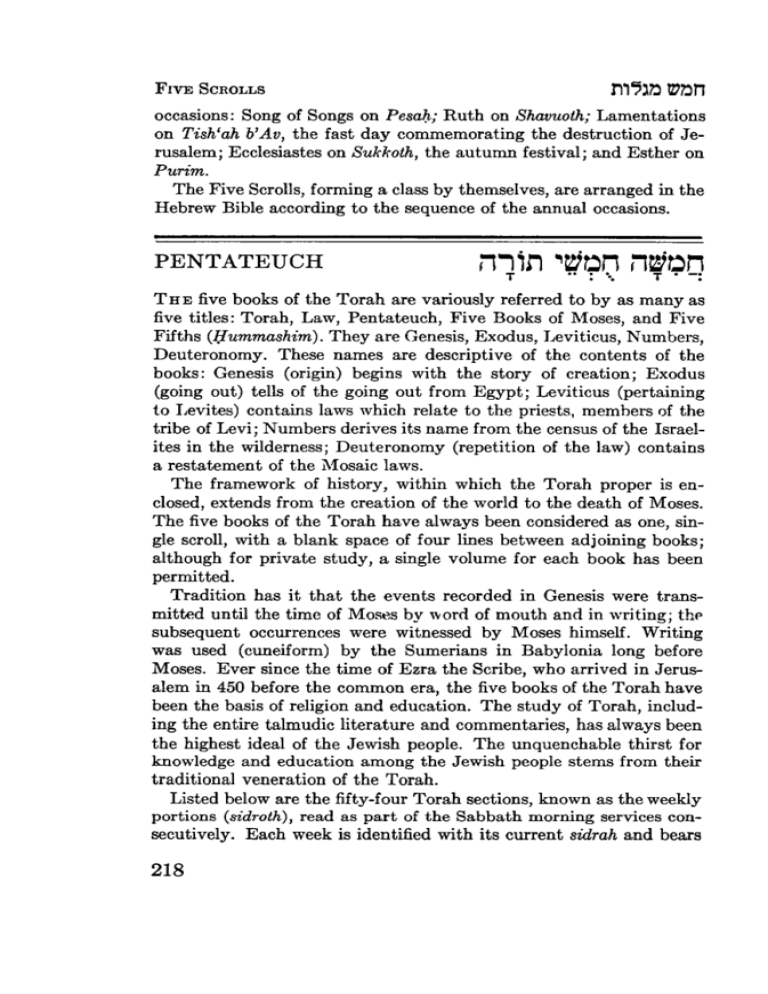
FIVE SCROLLS חמש מגלות occasions: Song of Songs on Pesah; Ruth on Shavuoth; Lamentations on Tish'ah b'Av, the fast day commemorating the destruction of Jerusalem; Ecclesiastes on Sukkoth, the autumn festival; and Esther on Purim. The Five Scrolls, forming a class by themselves, are arranged in the Hebrew Bible according to the sequence of the annual occasions. PENTATEUCH תורה חמשי חמשה T ״:•־. T ־ י: T " T • —• T H E five books of the Torah are variously referred to by as many as five titles: Torah, Law, Pentateuch, Five Books of Moses, and Five Fifths (Hummashim). They are Genesis, Exodus, Leviticus, Numbers, Deuteronomy. These names are descriptive of the contents of the books: Genesis (origin) begins with the story of creation; Exodus (going out) tells of the going out from Egypt; Leviticus (pertaining to Levites) contains laws which relate to the priests, members of the tribe of Levi; Numbers derives its name from the census of the Israelites in the wilderness; Deuteronomy (repetition of the law) contains a restatement of the Mosaic laws. The framework of history, within which the Torah proper is enclosed, extends from the creation of the world to the death of Moses. The five books of the Torah have always been considered as one, single scroll, with a blank space of four lines between adjoining books; although for private study, a single volume for each book has been permitted. Tradition has it that the events recorded in Genesis were transmitted until the time of Moses by word of mouth and in writing; the subsequent occurrences were witnessed by Moses himself. Writing was used (cuneiform) by the Sumerians in Babylonia long before Moses. Ever since the time of Ezra the Scribe, who arrived in Jerusalem in 450 before the common era, the five books of the Torah have been the basis of religion and education. The study of Torah, including the entire talmudic literature and commentaries, has always been the highest ideal of the Jewish people. The unquenchable thirst for knowledge and education among the Jewish people stems from their traditional veneration of the Torah. Listed below are the fifty-four Torah sections, known as the weekly portions (sidroth), read as part of the Sabbath morning services consecutively. Each week is identified with its current sidrah and bears 218

